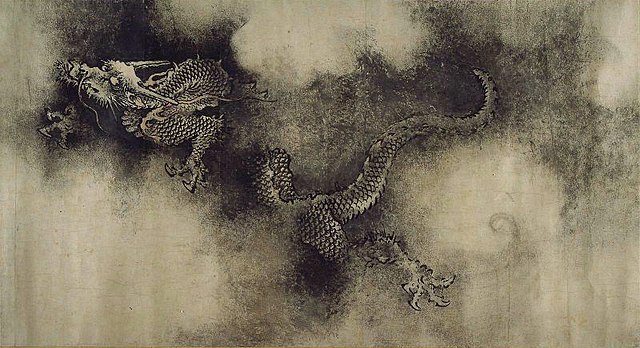Zhong Kui is a Taoist deity in Chinese mythology, traditionally regarded as a vanquisher of ghosts and evil beings. He is depicted as a large man with a big black beard, bulging eyes, and a wrathful expression. Zhong Kui is able to command 80,000 demons to do his bidding and is often associated with the five bats of fortune. Worship and iconography of Zhong Kui later spread to other East Asian countries, and he can also be found in the folklores and mythologies of Korea, Japan, and Vietnam.
A Ming painting of Zhong Kui the Demon Queller with Five Bats, with the five bats representing the five blessings as well as the vase, red coral, and fungi—held by demons—that also contain auspicious symbolism
Dai Jin's The Night Excursion of Zhong Kui (15th century), depicting Zhong Kui undertaking a night patrol while being carried in a sedan chair by four demons
Zhong Kui, the Demon Queller (17th century), in which Zhong Kui rides an ox while quelled demons carry his sword or lead his ox
A 16th-century painting, depicting a seated Zhong Kui
Chinese mythology is mythology that has been passed down in oral form or recorded in literature throughout the area now known as Greater China. Chinese mythology encompasses a diverse array of myths derived from regional and cultural traditions. Populated with engaging narratives featuring extraordinary individuals and beings endowed with magical powers, these stories often unfold in fantastical mythological realms or historical epochs. Similar to numerous other mythologies, Chinese mythology has historically been regarded, at least partially, as a factual record of the past.
Nine Dragons, handscroll section, by Chen Rong, AD 1244, Song dynasty, Museum of Fine Arts, Boston
Bronze mirror with cosmological decoration from the Belitung shipwreck, including Bagua.
The creation of the River of Heaven (Milky Way) across the sky.
Ming dynasty Water and Land ritual painting of celestial deities








